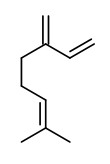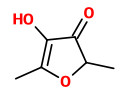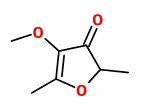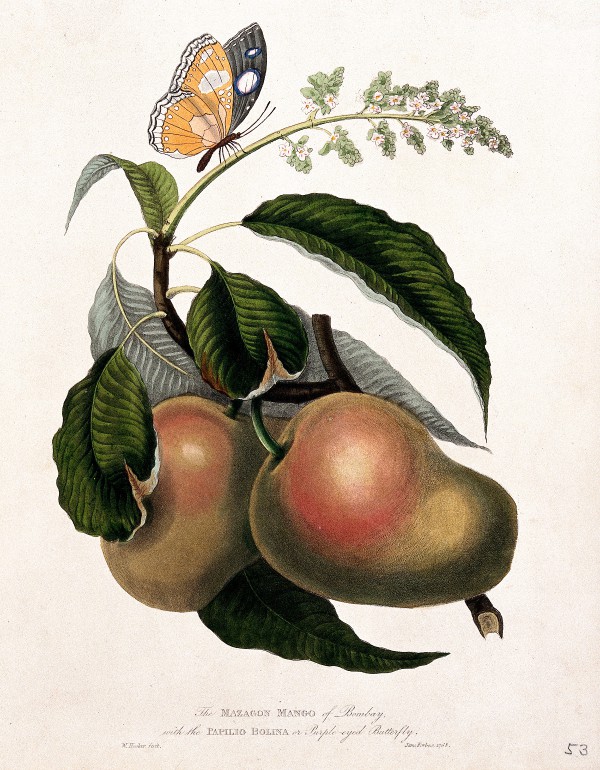Dies ist eine alte Version des Dokuments!
Mangifera indica L. - Anacardiaceae - mango, Mango
Evergreen tree, up to 45m high, native to India, cultivated elsewhere.
„The species appears to have been domesticated in India at around 2000 BC. The species was brought to East Asia around 400-500 BC from India; next, in the 15th century to the Philippines; and then, in the 16th century to Africa and Brazil by the Portuguese.“ http://en.wikipedia.org/wiki/Mangifera_indica
„The aroma volatiles of the Kensington cultivar of mango were analysed using routine procedures, and results compared with those for other cultivars. In total, 58 constituents were positively identified, including 36 not previously reported for this cultivar, and seven not previously described for any cultivar of mango. Monoterpene hydrocarbons were the major group of volatiles (at ca 49% w/w of the total volatiles) with α-terpinolene as the most abundant single constituent (ca 26%), but esters were unusually also major components (16 ca 33%). The latter probably contribute to the unique mango flavour of this cultivar, together with certain lactones important in peach flavour.“
[Volatile aroma constituents of mango (cv Kensington). MacLeod, A. J., Macleod, G., Snyder, C. H., Phytochemistry, Vol.27(7), 1988, 2189-2193]
The data analysis of volatile compounds of 15 varieties of mango (Mangifera indica L.) cultivated in Brazil has identified three distinguishable aroma groups: „The first group, rich in α-terpinolene, was composed of the following varieties: Cheiro (66.1%), Chana (62.4%), Bacuri (57.0%), Cameta H (56.3%), Gojoba (54.8%), Carlota (52.0%), Coquinho (51.4%) and Comum (45.0%). The second group, rich in δ-3-carene, comprised the following varieties: Haden (71.4%), Tommy (64.5%) and Keith (57.4%). The third group, rich in myrcene, was dominated by the following varieties: Cavalo (57.1%), Rosa (52.4%), Espada (37.2%) and Paulista (30.3%).
α-Terpinolene was the principal constituent of Willard, Parrot, Bowen and Kensington varieties. The first two occur in Sri Lanka, the Bowen fruit is indigenous of Australia and the Kensington mango is cultivated in Florida. The δ-3-carene is the major contributor to the aroma of mango fruit grown in Venezuela. Myrcene and (Z)-β-ocimene are characteristics of the Alphonso and Jaffna varieties from India and Sri Lanka, respectively.“
[Aroma volatile constituents of Brazilian varieties of mango fruit., Andrade, E.H.A., Maia, J.G.S., Maria das Graças, B.Z., Journal of food composition and analysis, 13(1), 2000, 27-33] http://www.alchimiaweb.com/blogfr/wp-content/uploads/2012/09/Mangue.pdf
 α-terpinolene |  δ-3-carene |  myrcene |  4-hydroxy-2,5-dimethyl- 3(2H)-furanone (DHF, HDMF, furaneol) |  4-methoxy-2,5-dimethyl- 3(2H)-furanone (DMF, mesifuran) |  (E,Z)-nona-2,6-dienal |
Combined analysis with GC-O and a sulphur detector as well as synthesis of the target compound showed ethyl 3-mercaptobutyrate to be a key mango aroma component. Ocimene was a major component in Alphonos mango and terpinolene in Philippine mango. Other components were e.g. (E,Z)-2,6-nonadienal, 4-methoxy-2,5-dimethyl-3(2H)-furanone (mesifuran), and aliphatic esters like ethyl acetate, ethyl butyrate, and 2,5-dimethyl-4-oxo-4,5-dihydrofuran-3-yl butyrate.
[Dewis, M. L., and L. Kendrick. „Creation of flavours and the synthesis of raw materials inspired by nature“ Advances in Flavours and Fragrances: From the Sensation to the Synthesis 277 (2002): 147-160]
The total concentration of volatiles of 20 mango cultivars was 18−123 mg/kg (fresh fruit). „Terpene hydrocarbons were the major volatiles of all cultivars, the dominant terpenes being δ-3-carene (cvs. Haden, Manga amarilla, Macho, Manga blanca, San Diego, Manzano, Smith, Florida, Keitt, and Kent), limonene (cvs. Delicioso, Super Haden, Ordoñez, Filipino, and La Paz), both terpenes (cv. Delicia), terpinolene (cvs. Obispo, Corazón, and Huevo de toro), and α-phellandrene (cv. Minin)… The melon-like flavor of many studied cultivars should be related to (E,Z)-2,6-nonadienal and (E)-2-nonenal, known to contribute to the aroma of cucumbers… The compound 2,5-dimethyl-4-methoxy-3(2H)-furanone, commonly named mesifuran and previously reported in mango fruits, was present in almost all of the studied cultivars. This constituent, described as having a sherry wine-like note, has a very low odor detection threshold of 0.03 ppb. It might therefore contribute significantly to the overall aroma of some of the studied cultivars. The corresponding hydroxy compound, 2,5-dimethyl-4-hydroxy-3(2H)-furanone, commonly named Furaneol, which was identified as a mango volatile component, was not detected in this study.“ (E)-β-Damascenone and some γ-lactones were present in the most of the cultivars.
[Volatile components from mango (Mangifera indica L.) cultivars., Pino, J.A., Mesa, J., Muñoz, Y., Martí, M.P., Marbot, R., Journal of agricultural and food chemistry, 53(6), 2005, 2213-2223] http://ucanr.edu/datastoreFiles/608-655.pdf
„Consideration of the odour detection thresholds of mango volatile compounds and their concentrations in the fruit (odour activity values) in 20 cultivars indicated that the compounds potentially most important to mango aroma include ethyl-2-methylpropanoate, ethyl butanoate, (E,Z)-2,6-nonadienal, (E)-2-nonenal, methyl benzoate, (E)-β-ionone, decanal and 2,5-dimethyl-4-methoxy-3(2H)-furanone. Numerous other volatiles have odor activity values greater than 1 and also may make a contribution. Sensory studies are needed to determine the volatiles truly defining mango aroma.“
[Contribution of volatile compounds to mango (Mangifera indica L.) aroma. Pino, J. A., Mesa, J., Flavour and fragrance journal, Vol.21(2), 2006, 207-213]
„Simultaneous distillation–extraction combined with GC-FID and GC-MS were used to analyse volatile compounds from mango (Mangifera indica L. cv. Corazón) and to estimate the most odour-active compounds in the fruit. The analyses led to the identification of 167 components, from which 128 were positively identified. The aroma-active areas in the gas chromatogram were screened by the application of the aroma extract dilution analysis and by odour activity values. Eighteen odorants were considered as the most odour-active compounds: (E)-β-damascenone, ethyl butanoate, (E,Z)-nonadienal, ethyl 2-methylpropanoate, (E)-2-nonenal, (E)-β-ionone, terpinolene, δ-3-carene, β-caryophyllene, ethyl 2-methylbutanoate, limonene, myrcene, linalool, γ-octalactone, nonanal, methyl benzoate, 2,5-dimethyl-4-methoxy-3(2H)-furanone and hexanal.“
[Odour‐active compounds in mango (Mangifera indica L. cv. Corazón). Pino, J. A., International Journal of Food Science & Technology, Vol.47(9), 2012, 1944-1950]
4-Hydroxy-2,5-dimethyl-3(2H)-furanone has been found an important aroma compound in several Mango cultivars (Haden, White Alfonso, Praya Sowoy, Royal Special, and Malindi).
[Characterization of the major aroma-active compounds in mango (Mangifera indica L.) cultivars Haden, White Alfonso, Praya Sowoy, Royal Special, and Malindi by application of a comparative aroma extract dilution analysis., Munafo Jr, J. P., Didzbalis, J., Schnell, R. J., Schieberle, P., Steinhaus, M., Journal of agricultural and food chemistry, 62(20), 2014, 4544-4551]

Mango (Mangifera indica L.) flower and fruit with a purple-eyed butterfly (Papilio sp.). Coloured aquatint by W. Hooker after J. Forbes, 1768
https://commons.wikimedia.org/wiki/File:Mango_(Mangifera_indica_L.)_flower_and_fruit_with_a_purple-e_Wellcome_V0043043.jpg CC BY-SA 4.0, Author: wellcome library, http://catalogue.wellcomelibrary.org/record=b1177942

Mango fruits, Situbondo, East Java, Indonesia (2007)
CC BY-SA 3.0, Author: W.A. Djatmiko (Wie146) Wikimedia Commons
